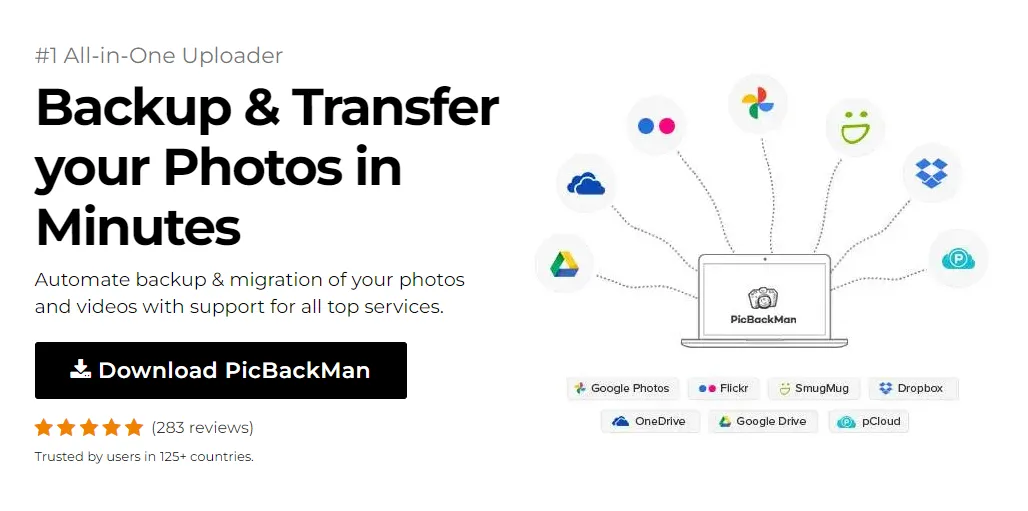What does that plus ‘+’ sign mean?
Backup & Transfer your Photos in Minutes
Automate backup & migration of your photos & videos with support for all top services.
Trusted by users in 125+ countries.
The plus sign '+' is one of the most recognizable symbols in the world. It's a simple glyph composed of two intersecting lines, yet its meanings and applications span a vast array of fields, from basic arithmetic to complex mathematics, computer programming, and even everyday life. In this article, we'll dive deep into the question: "What does that plus '+' sign mean?" We'll explore its origins, its various interpretations across different contexts, and its significance in our modern world.
At its core, the plus sign '+' represents addition or positivity. However, this seemingly straightforward symbol carries a wealth of meanings depending on the context in which it's used. In mathematics, it signifies the operation of adding two or more numbers together. In programming, it can denote concatenation or increment operations. In everyday life, it might indicate an advantage or a positive aspect of something.
The versatility of the plus sign is what makes it so intriguing. Its meaning can shift dramatically based on where and how it's employed. From indicating battery polarity to representing blood types, the plus sign's applications are as diverse as they are numerous. As we delve deeper into this topic, we'll uncover the many faces of this ubiquitous symbol and gain a greater appreciation for its role in our lives and various fields of study.
The Historical Origins of the Plus Sign
The plus sign has a rich history that dates back several centuries. Understanding its origins can provide valuable context for its modern usage.
Early representations of addition
Before the plus sign as we know it today came into use, various cultures had their own ways of representing the concept of addition. Ancient Egyptians used hieroglyphs, while Romans used the Latin word "et" (meaning "and"). These early representations laid the groundwork for the development of a more unified symbol.
The birth of the modern plus sign
The plus sign as we recognize it today is believed to have originated in the late 15th century. Its first documented use is often attributed to Johannes Widmann, a German mathematician who used it in a published work in 1489. However, the symbol didn't gain widespread adoption immediately.
Evolution and standardization
Over the following centuries, the plus sign gradually became more widely used and standardized. Its simplicity and effectiveness in representing addition contributed to its adoption across Europe and eventually the world. By the 17th century, it had become a standard symbol in mathematical notation.
Cultural variations
While the plus sign is now universally recognized, it's worth noting that some cultures developed alternative symbols for addition. For example, in some Arabic-speaking countries, a small superscript dot is sometimes used instead of the plus sign. These variations remind us of the diverse ways humans have approached mathematical concepts throughout history.
Mathematical Meanings of the Plus Sign
In mathematics, the plus sign serves multiple functions, each critical to various areas of study. Let's explore some of its primary mathematical meanings.
Basic arithmetic addition
The most fundamental use of the plus sign is in basic arithmetic addition. When we see 2 + 3 = 5, we understand that we're combining the quantities represented by 2 and 3 to get a sum of 5. This operation forms the basis for more complex mathematical concepts.
Positive numbers
In the context of the number line, the plus sign is used to denote positive numbers. For instance, +5 explicitly indicates a positive five, as opposed to -5 (negative five). This use of the plus sign helps clarify the nature of a number, especially in situations where both positive and negative values are possible.
Vector addition
In more advanced mathematics, particularly in physics and engineering, the plus sign is used to represent vector addition. This operation combines two or more vectors, taking into account both their magnitude and direction.
Algebraic operations
In algebra, the plus sign takes on additional meanings. It can represent the combination of like terms, the addition of polynomials, or even the union of sets in set theory. These applications demonstrate the symbol's versatility in higher-level mathematics.
Calculus and beyond
Even in calculus and more advanced mathematical fields, the plus sign retains its importance. It's used in the notation for limits, derivatives, and integrals, often indicating the combination of different terms or functions.
The Plus Sign in Computer Programming
The world of computer programming has adopted the plus sign and given it new meanings, expanding its utility beyond traditional mathematics.
String concatenation
In many programming languages, the plus sign is used to concatenate strings. For example, "Hello" + "World" would result in "HelloWorld". This operation combines two separate strings into a single, longer string.
Arithmetic addition
Just as in mathematics, the plus sign in programming is used for arithmetic addition. When dealing with numeric data types, 5 + 3 would evaluate to 8. However, it's important to note that the behavior can change depending on the data types involved.
Increment operator
In languages like C, C++, and Java, the plus sign is used in the increment operator (++). This operator increases the value of a variable by 1. For instance, x++ is equivalent to x = x + 1.
Unary plus operator
Some programming languages use the plus sign as a unary operator to explicitly indicate a positive number or to attempt to convert a value to a number. In JavaScript, for example, +"3" would convert the string "3" to the number 3.
Overloaded operators
In object-oriented programming languages that support operator overloading, the plus sign can be given custom behaviors for user-defined classes. This allows programmers to define what "addition" means in the context of their own data types.
The Plus Sign in Everyday Life
Beyond mathematics and programming, the plus sign has found its way into various aspects of our daily lives, often carrying meanings related to positivity or addition.
Grading systems
In some educational systems, grades might be denoted with plus signs. For example, a B+ typically indicates a grade that's better than a B but not quite an A.
Size designations
Clothing sizes often use plus signs to indicate larger sizes, particularly in women's fashion. For instance, 2X+ might refer to sizes larger than XXL.
Blood types
In the ABO blood type system, the plus sign is used to indicate the presence of the Rhesus factor. For example, A+ means type A blood that is Rhesus positive.
Battery polarity
On batteries, the plus sign indicates the positive terminal. This usage is crucial for correctly inserting batteries into devices.
Indicating advantages
In everyday language, we often use "plus" or the plus sign to indicate an advantage or positive aspect. For example, "The new job comes with a higher salary, plus better benefits."
Social media and file sharing
On some social media platforms and file-sharing services, the plus sign is used to add new content or connections. For instance, clicking a '+' button might allow you to create a new post or add a new friend.
The Plus Sign in Science and Technology
The plus sign plays a significant role in various scientific and technological fields, often representing specific concepts or measurements.
Chemical reactions
In chemistry, the plus sign is used in chemical equations to separate reactants and products. For example, H2 + O2 → H2O represents the formation of water from hydrogen and oxygen.
Electrical circuits
In electrical engineering, the plus sign denotes positive voltage or the positive terminal of a power source. It's essential for understanding the flow of electricity in circuit diagrams.
Boolean logic
In Boolean algebra and digital logic, the plus sign sometimes represents the OR operation. This usage is particularly common in some programming contexts and in the design of digital circuits.
Coordinate systems
In coordinate geometry, the plus sign is used to indicate positive directions on axes. For instance, moving right or up on a 2D coordinate plane typically involves positive coordinates.
Scientific notation
When expressing very large or very small numbers in scientific notation, the plus sign indicates positive exponents. For example, 1.5 x 10^+3 represents 1500.
The Plus Sign in Design and Typography
The plus sign's simple yet distinctive shape has made it a popular element in design and typography.
Logo design
Many companies incorporate the plus sign into their logos to convey ideas of addition, positivity, or synergy. It's a versatile symbol that can be stylized in numerous ways while remaining recognizable.
User interface elements
In digital design, the plus sign is often used to indicate the ability to add something or expand a section. It's a common icon for "New" or "Add" functions in applications and websites.
Mathematical and technical fonts
Specialized fonts for mathematics and technical writing often include various forms of the plus sign, including different weights and styles to suit different contexts.
Artistic interpretations
Artists and designers sometimes use the plus sign as a motif in their work, playing with its shape and cultural associations to create interesting visual effects or convey specific messages.
Typographic considerations
When typesetting mathematical or technical content, careful consideration must be given to the spacing and alignment of plus signs to ensure clarity and readability.
The Plus Sign in Language and Communication
The concept of "plus" and the plus sign have influenced our language and communication in various ways.
Linguistic usage
In many languages, words derived from or related to "plus" are used to indicate addition or positivity. For example, the English word "pluses" refers to advantages or positive aspects.
Text and instant messaging
In text-based communication, the plus sign is sometimes used as shorthand for "and" or to add additional information. For instance, "Meeting at 3 + bring snacks" conveys two pieces of information concisely.
Mathematical language in everyday speech
Phrases like "plus or minus" have entered everyday language, often used to indicate approximation or flexibility. For example, "I'll be there in 30 minutes, plus or minus 5."
Emphasis and positivity
In informal writing, multiple plus signs might be used for emphasis or to indicate strong positivity. For example, "This movie was great+++"
International communication
The plus sign's universality makes it useful in international communication, particularly in contexts where linguistic barriers might exist.
The Plus Sign in Finance and Economics
In the world of finance and economics, the plus sign carries specific meanings related to positive financial outcomes or additions.
Profit indication
A plus sign before a number in financial reports typically indicates a profit or a positive balance. For example, +$1000 would represent a profit of $1000.
Stock market performance
When discussing stock market performance, a plus sign usually denotes an increase in value. "+2%" would indicate that a stock or index has risen by 2%.
Currency exchange rates
In foreign exchange markets, a plus sign might be used to show that one currency has strengthened against another.
Budget surpluses
Governments and organizations use the plus sign to indicate budget surpluses, representing instances where income exceeds expenditure.
Positive economic indicators
Economic reports often use plus signs to highlight positive trends in indicators like GDP growth, employment rates, or consumer confidence.
Misconceptions and Common Errors Regarding the Plus Sign
Despite its ubiquity, there are several misconceptions and common errors associated with the use of the plus sign.
Confusion with other symbols
Some people confuse the plus sign with the lowercase letter 't' or the Christian cross. While these symbols can look similar, they have distinct meanings and uses.
Misuse in programming
Novice programmers sometimes misuse the plus sign, particularly when dealing with different data types. For example, trying to use '+' to add a number to a string can lead to unexpected results in some programming languages.
Mathematical order of operations
Many people forget that multiplication and division take precedence over addition (represented by the plus sign) in the order of operations, leading to incorrect calculations.
Misinterpretation in grading systems
The use of plus and minus signs in grading can sometimes lead to confusion about their exact meaning and how they affect grade point averages.
Incorrect use in chemical equations
Students sometimes misuse the plus sign in chemical equations, forgetting that it separates distinct chemical species rather than indicating a chemical bond.
The Future of the Plus Sign
As we look to the future, it's interesting to consider how the role and meaning of the plus sign might evolve.
Digital transformations
As more of our lives move into digital spaces, we might see new uses for the plus sign emerge in user interfaces and digital communication.
Mathematical and scientific advancements
New areas of mathematics and science might develop novel uses for the plus sign or create variations on it to represent new concepts.
Linguistic evolution
The way we use "plus" and the plus sign in language may continue to evolve, potentially taking on new idiomatic meanings.
Cultural shifts
Changes in global culture and communication might affect how the plus sign is perceived and used across different societies.
Technological innovations
Emerging technologies like augmented reality might create new contexts in which the plus sign takes on unique significance.
Quick Tip to ensure your videos never go missing
Videos are precious memories and all of us never want to ever lose them to
hard disk crashes or missing drives. PicBackMan is the easiest and simplest
way to keep your videos safely backed up in one or more online accounts.
Simply Download PicBackMan (it’s
free!), register your account, connect to your online store and
tell PicBackMan where your videos are – PicBackMan does the rest,
automatically. It bulk uploads all videos and keeps looking for new ones and
uploads those too. You don’t have to ever touch it.
Frequently Asked Questions
What is the origin of the plus sign?
The plus sign as we know it today is believed to have originated in the late 15th century. Its first documented use is often attributed to Johannes Widmann, a German mathematician who used it in a published work in 1489. However, the concept of addition and various symbols to represent it have existed in different cultures for much longer.
Is the plus sign used the same way in all languages?
While the plus sign is widely recognized globally, its use can vary slightly between languages and cultures. For example, some Arabic-speaking countries may use a small superscript dot instead of the plus sign for addition. However, in most mathematical and scientific contexts, the use of the plus sign is largely standardized internationally.
How is the plus sign used differently in mathematics and programming?
In mathematics, the plus sign primarily represents addition or indicates a positive number. In programming, while it's also used for arithmetic addition, it can have additional meanings depending on the context and language. For example, it might be used for string concatenation, as an increment operator (++), or as part of other compound operators (+=).
Can the plus sign mean anything negative?
Generally, the plus sign represents positive concepts. However, in some contexts, it might be part of an expression that ultimately yields a negative result. For example, in the expression "(-5) + (-3)", the plus sign is used, but the result is -8. Additionally, in Boolean logic, a plus sign sometimes represents the OR operation, which isn't inherently positive or negative.
How does the plus sign relate to the positive sign in mathematics?
In mathematics, the plus sign and the positive sign are essentially the same symbol used in slightly different contexts. When written before a number (like +5), it explicitly indicates a positive number. When used between numbers (like 2 + 3), it indicates the operation of addition.
Are there any cultural or religious significances to the plus sign?
While the plus sign itself doesn't have specific religious significance, its shape is similar to some culturally and religiously important symbols. For example, it resembles the Christian cross, although typically the vertical line of a cross is longer than the horizontal line. In some Native American cultures, a similar symbol represents the four directions. However, in mathematical and most other contexts, the plus sign is used secularly without religious connotations.
Conclusion
The plus sign, despite its simple appearance, carries a wealth of meanings and applications across various fields. From its historical origins in mathematics to its modern uses in programming, finance, and everyday communication, this symbol has proven to be remarkably versatile and enduring.
Understanding "what does that plus '+' sign mean?" requires us to consider the context in which it's used. In mathematics, it primarily represents addition and positivity. In programming, it can denote addition, concatenation, or increment operations. In everyday life, it might indicate an advantage, a positive aspect, or simply the act of adding something.
The plus sign's influence extends beyond these technical applications. It has shaped our language, influenced design and typography, and become a universal symbol for positivity and addition. Its simplicity and recognizability have allowed it to transcend linguistic and cultural barriers, making it a truly global symbol.
As we move into an increasingly digital and interconnected future, the plus sign is likely to continue evolving in its usage and significance. New technologies and fields of study may find novel applications for this versatile symbol, while its core meanings of addition and positivity are likely to remain constant.
In essence, the plus sign serves as a reminder of the power of simple, effective symbols in human communication and understanding. Its ability to convey complex ideas with a single stroke speaks to the elegance of mathematical and logical thinking, and its widespread adoption demonstrates the human capacity for creating and sharing meaningful symbols across cultures and disciplines.










